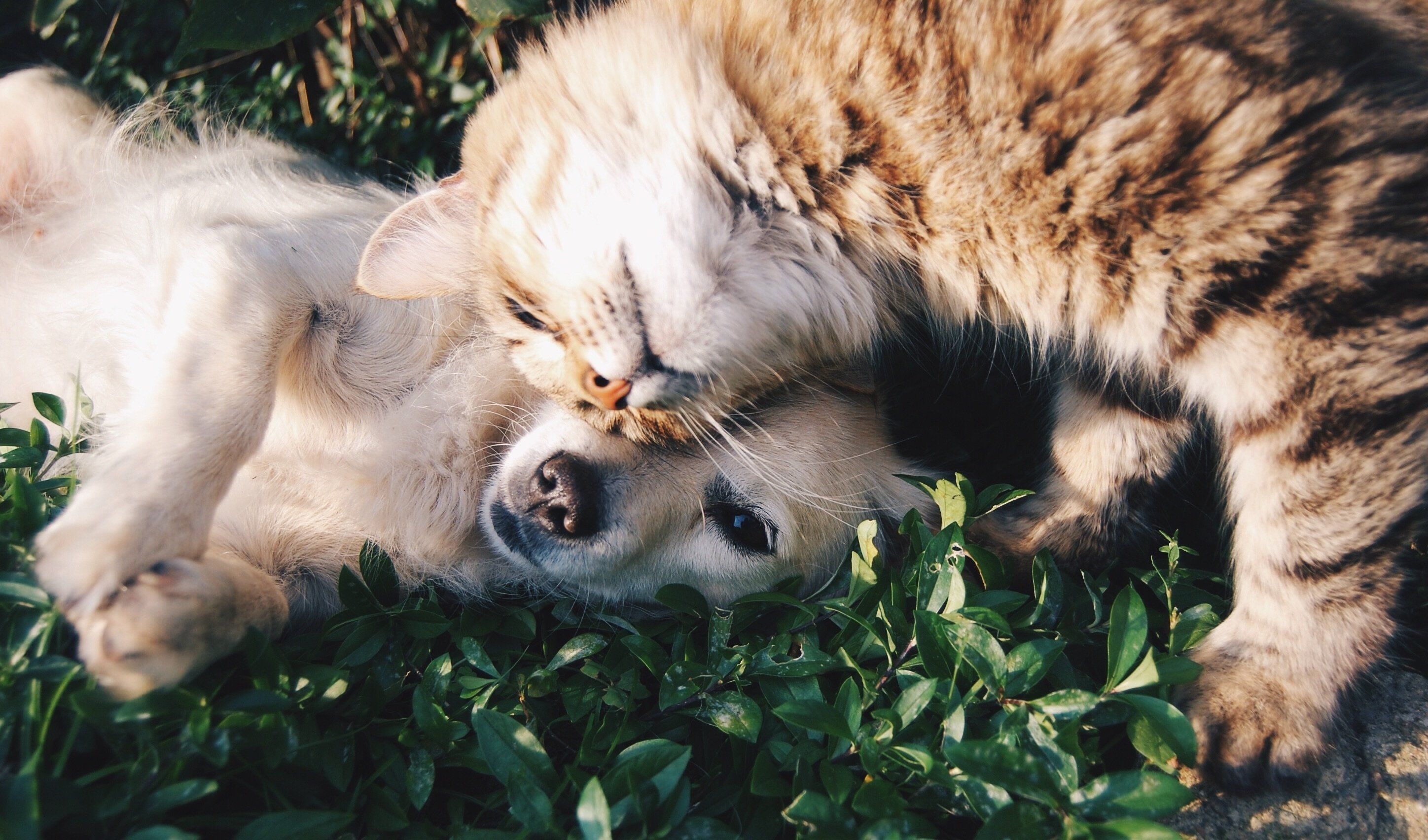How to Find a Pet-friendly Rental Property
26 May 2022
Pets are cute and can always brighten up our days. But finding a pet-friendly property is never easy. Explore why and how to find the best rental homes for your furry friends.
Although nearly 45% of people in the UK own a pet of some kind, only 7% of landlords currently offer pet-friendly properties1. This is a significant challenge for pet owners who often have to double the effort to find a suitable rental for their furry friends.
Read on as we discuss the challenges associated with pets and how to find a pet-friendly property to rent.
- Why It Is Not Easy to Find a Pet-friendly Property
- Be Flexible
- Be Prepared to Pay Higher
- Check the Location
- Ask About Amenities
- Size and Breed Restrictions
- Provide Necessary Documentation
- Provide References for Your Pet
- What Happens If You Do Not Comply With Your Tenancy Agreement?

Why It Is Not Easy to Find a Pet-friendly Property
Usually, landlords are afraid that pets can damage the floors, wiring, or woodwork in the apartment. This can cause their maintenance costs to increase. Pets can be noisy and unpleasant pet smells can linger even after the property has been vacated.
If the landlord owns a leasehold property, the freeholder may not allow pets in the premise2.
How To Find a Pet-friendly Rental Property?
Finding a pet-friendly rental is difficult but not impossible. Even if you find it hard, think of all the joy your pet can bring into your life! Putting yourself through a little extra trouble while apartment hunting is certainly worth it. The UK government is also revising the model rental contract to make it easier for pet owners to find a pet-friendly rental. The previous rental contract was considered vague, making it easier for landlords to turn away pet owners looking to rent the property3.

If you are trying to figure out how to find a pet-friendly rental property in the UK, then here is a guide that can help make your search easier:
1. Be Flexible
There are only a limited number of pet-friendly properties available, so you must try and be flexible about the property you finally choose to rent.
2. Be Prepared to Pay a Higher Rent 💸
As per the Tenant Fees Bill, landlords can no longer ask for a higher deposit from pet owners4. However, you may still be charged a higher rent. Since different pets pose different complications, most landlords will negotiate the rent price based on the type of pet you have.
On average, most landlords charge £50 per month as additional rent on a single pet5.
3. Check the Location 📍
Make sure you scope out the neighbourhood when looking for a pet-friendly rental. For instance, you need to check if there are good pet stores close to the property. This will make it easier for you to go out and buy pet food urgently. If your pet gets sick, then you can also visit the pet store to explore other food choices and provide them with some different.
You must also make sure to live near a good veterinarian and groomer. Take a look around and see if these services are located near the apartment you want to rent. Having a good vet nearby is vital for handling emergencies. You can also check for other perks, such as a park, in the locality where you can walk your dog.
4. Ask About Amenities
This is another important consideration for pet owners trying to figure out how to find a pet-friendly rental property. If you own a dog, then consider renting a property that offers the following amenities:
- Dog-walking stations with poop bags available for free
- Pet washing stations
- Dog parks (on the roof or the ground) or walking paths
- Green space on or close to the property
In the case of cats, pet owners can look for rental properties with the following features:
- Mantles, shelves, window seats
- Carpeted floors

You must also consider the size of the property and its layout so that you and your pet can live comfortably. The property should be easy to clean and should not pose any hazards to your pet. You can check the orientation of windows and see if there are any dangerous areas nearby that pose a threat to your pet.
5. Be Aware of Size and Breed Restrictions
Most landlords prefer apartment pets such as indoor cats, small dogs, fish, gerbils, hamsters, pet rats, rabbits, guinea pigs, insects and reptiles. The best dog breeds that are suitable to live in apartments include Boston terriers, French bulldogs, Pugs, Yorkshire terriers, Cavalier King Charles Spaniels, Bichon Frise, etc.
Bear in mind that in the UK, there are also certain restrictions on the type of pet you can adopt. For example, you cannot keep the following dog breeds as pets in the UK6:
- Pit bull terrier
- Japanese Tosa
- Dogo Argentino
- Fila Brazilero
You also need a license for the following animals:
- Exotic animals
- Certain types of snakes and spiders
- Domestic-wild hybrid cats and dogs
As far as size restrictions are concerned, landlords may not allow large breeds of dogs on their property (above 20 pounds).
6. Provide Necessary Documentation 📄
If you are trying to find a pet-friendly rental property, make sure you prove yourself as trustworthy to the landlord. Gather all the necessary pet documents and provide it to them. These include:
- Updated vaccination records
- The contact information of your vet
- Microchip number
- License number
- Some recent photos of the pet
You can also provide proof of insurance if your pet injures other people and reassure the landlord about keeping your pet well-groomed to prevent problems such as a flea infestation in the property.

7. Provide References for Your Pet 🐾✍️
If the landlord feels sceptical about renting to a pet owner, you can also win them over by providing references from previous landlords and neighbours. These can state that your pet has always exhibited good behaviour and has not caused any property damage in the past.
When providing a pet reference, make sure to include the following information:
- The length of time you lived at a previous property with your pet
- The type of pet you owned at the time
- Whether the individual providing the reference considers you as a responsible pet owner
- Whether your pet is well behaved
- Whether your pet proved to be a nuisance to your previous neighbours and visitors
- Whether your pet caused any damage to the previous property you rented
What Happens If You Do Not Comply With Your Tenancy Agreement?
As a tenant, if you fail to meet the terms and conditions defined in the tenancy agreement and your pet causes damage to the property, then the landlord can charge you for the damage by using your tenancy deposit. As mentioned earlier, they can increase your rent by £50 per month to cover these damages. They may also choose to evict you from the property if you end up violating the agreement.
To avoid this, make sure you watch your pet at all times and keep them well-groomed. You must also ensure your pet does not disturb your neighbours and act quickly if they create too much noise. If you receive any complaints or your pet causes any damage, then deal with the situation promptly and inform the landlord. If you have a dog, then try and walk them frequently so they don’t feel cooped up for too long.
Let Us Help
There’s no denying the imminent challenges that come with finding a pet-friendly rental in the UK. If you are struggling to find a suitable pet-friendly property, check out the list of all BTR and co-living developments in the UK. and filter for the Pet-friendly option.
Need more information on how to find a pet-friendly property? Feel free to reach out to us. We’ll be more than happy to assist you!

- Zoopla, Renting with pets↩
- Lets With Pets, Renting to pet owners - A guide for landlords and letting agencies↩
- The Negotiator, Government to overhaul model tenancy to encourage landlords to accept pet-owning tenants↩
- Landlord Law Services, Letting to Tenants with Pets↩
- The Guardian, Landlords charge 'pet rent' to recoup losses after ban on unfair fees↩
- UK Government, Controlling your dog in public↩
